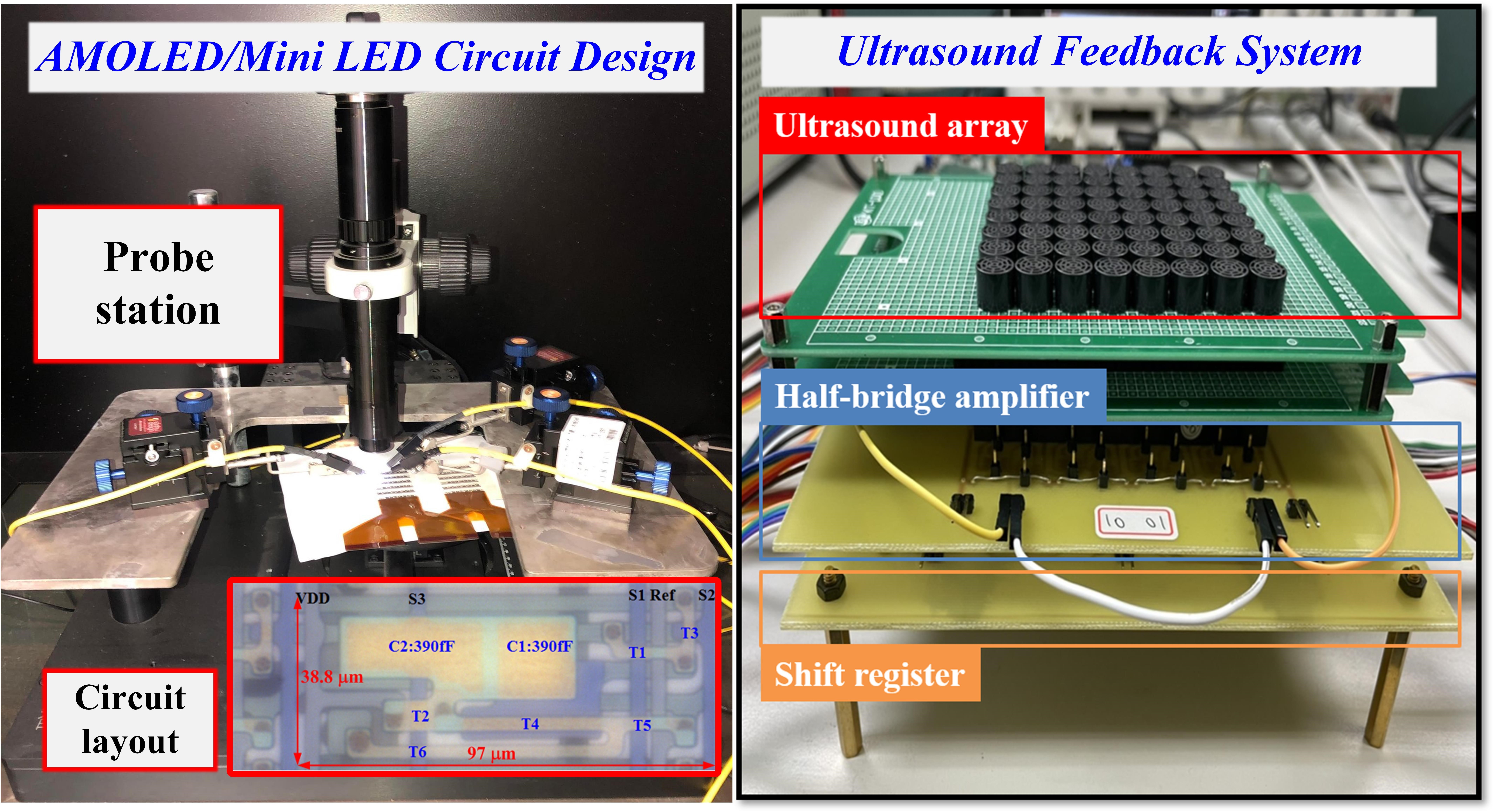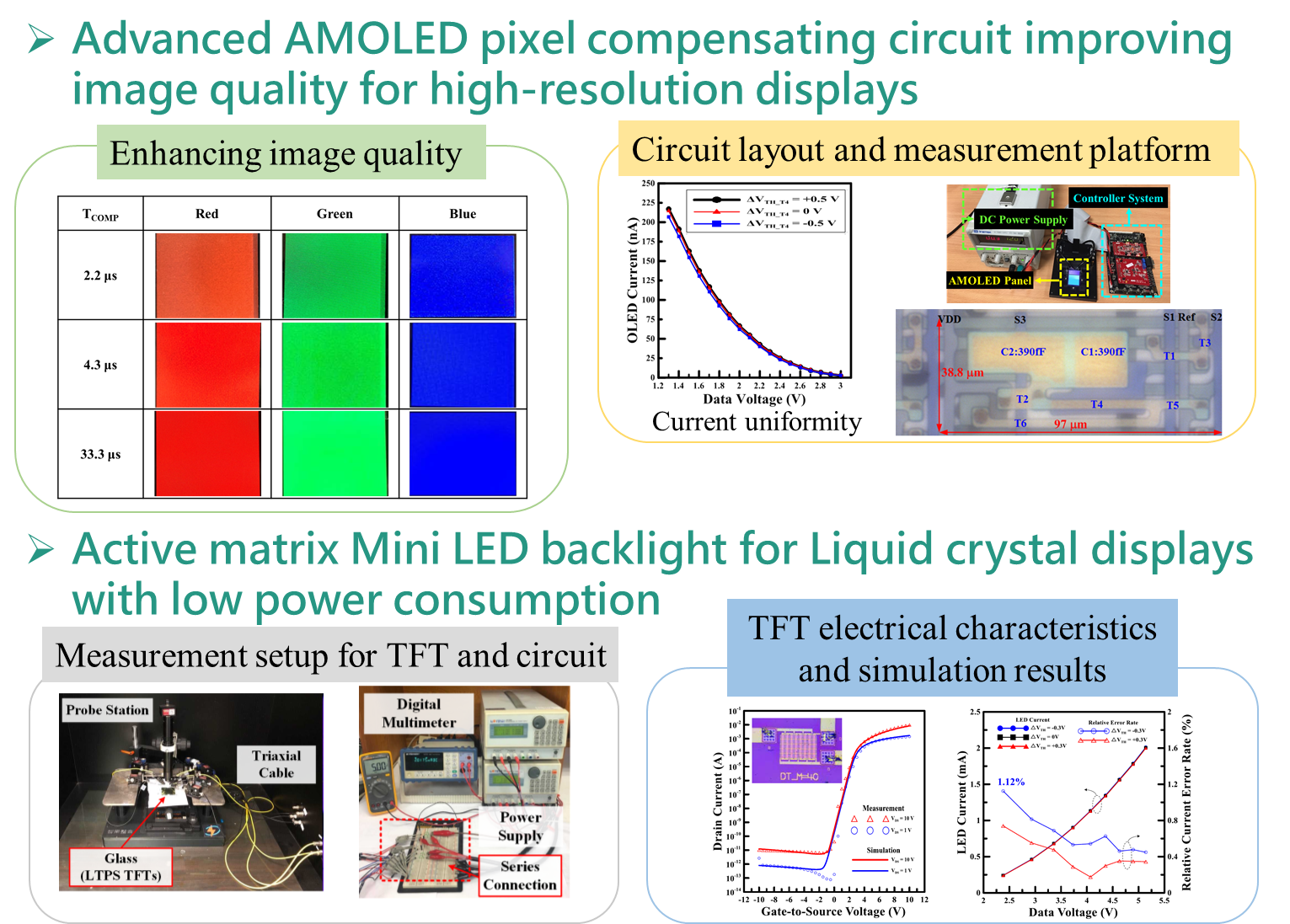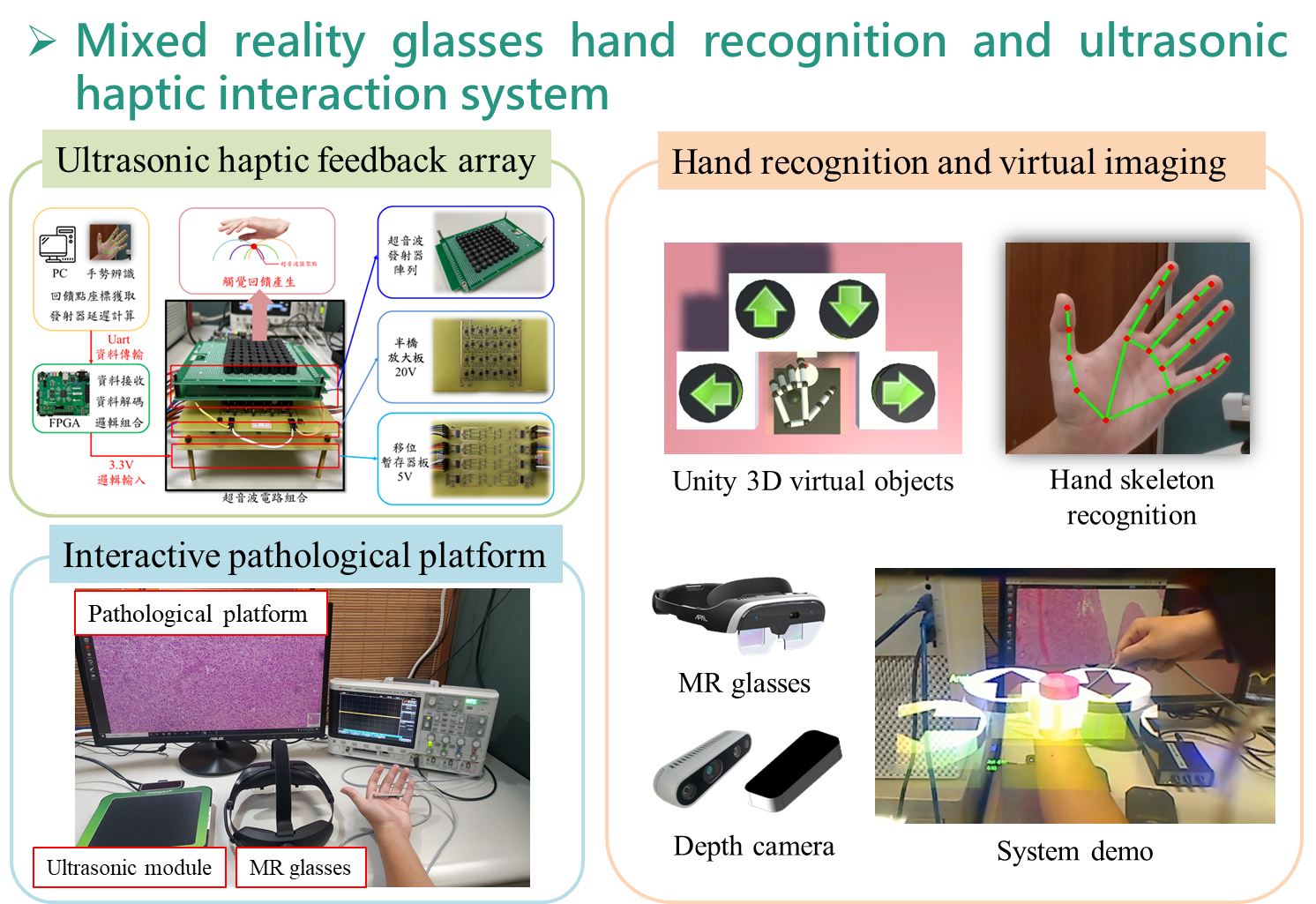Development of Prospective Display System Circuit and Ultrasonic Haptic Feedback System

|
Development of Prospective Display System Circuit and Ultrasonic Haptic Feedback System Prof. Chih-Lung Lin has been deeply involved in the development of display circuits and biomedical electronic systems. In terms of display circuits, he proposed a parallel compensation method for AMOLED pixel circuits to achieve high resolution and designed a compensation mechanism to compensate for the variation in the electrical characteristics of the devices of the panel to achieve high image uniformity. For the active matrix Mini-LED backlight driving circuit of liquid crystal displays, the contrast ratio is greatly increased by the local dimming method, improving the picture quality. The voltage across the supply voltage (VDD and VSS) for the proposed circuit is reduced, thereby reducing the power consumption and increasing the use time of the display. As for biomedical electronic applications, we developed an ultrasonic haptic feedback interactive display system. By combining artificial intelligence and gesture recognition with MR glasses to provide low-latency and high-precision operations, the user experience is enhanced in a non-contact manner. |
|||||||
| __________________________________________________________________________________________________________ | |||||||
|
With the increasing demand for high-quality displays, traditional liquid crystal displays have been gradually replaced due to their shortcomings such as narrow viewing angles, low contrast ratios, and low color saturation. The characteristics of AMOLED enable the contrast ratio and resolution of displays to be improved, and AMOLED displays have gradually become the mainstream of the market. Our laboratory has been committed to the development of advanced display circuits for a long time, including AMOLED, blue-phase liquid crystal (BPLC), Mini/Micro LED displays, etc. For the first time in academia, we light up a high-resolution AMOLED panel with a parallel compensation scheme. The circuit is used to increase the resolution of the display, and a compensation mechanism is designed to compensate for the variation of the electrical characteristics of the devices that are used in AMOLED display backplanes so as to reduce the non-uniformity of the image and achieve a high-quality image. In addition, our laboratory has developed an active matrix Mini-LED as a backlight source for liquid crystal displays. Mini-LED is an inorganic material that can greatly improve the lifetime of the display. Through the combination of the small size of Mini-LED and the local dimming method, the greatly improved contrast ratio is comparable to AMOLED displays. By designing the driving circuit of the backlight to reduce the voltage across the light-emitting path, the power consumption of the display can be greatly reduced, and the use time of the display can be increased. Our laboratory is also currently carrying out the national smart display (SRB) program of the Ministry of Science and Technology (MOST) and industry-academia collaboration programs, designing display driver circuits for advanced Micro-LEDs and hoping to realize high PPI (Pixels per inch) Micro-LED displays in the future. Promoting the development of Taiwan display technology cultivates high-level display professionals and enhances the competitiveness of Taiwan's display industry.
|
|||||||
|
Figure 1 High-resolution AMOLED and low-power Mini LED display circuit development |
|||||||
| In response to our country's "Smart-Living Display Technology and Application Industry Strategy (SRB)", our team also imported advanced display technology into medical applications to enhance the additional value of the display industry and solve the problems of cognitive errors and tactile interaction in the metaverse operation. The technology developed by our team can be applied to future automotive displays, MR, and VR to provide users with a good operating experience. Our team takes the virtual microscope operation as the main concept. To control the virtual object, a flat-panel display, gesture recognition, tactile interaction, and a MR display are combined. Since virtual objects cannot be seen visually, our team used MR glasses as a virtual display device, which can both display operating objects and superimpose intelligent prompt information on the target. In terms of operation, the depth camera is utilized for gesture recognition. In addition, the way to generate feedback against virtual object operations is the main topic of the current metaverse development. To enhance the user's operating experience, our team developed a non-contact ultrasonic haptic feedback system that can apply feedback force to the user in mid-air. Compared with other feedback technologies, the non-contact ultrasonic haptic feedback system is wear-free, low-latency, and high-precision force feedback. Through the combination of various advanced display technologies, we achieve the goals of non-contact operation, precise control, and intelligent prompting, which will be of great help to the policy promotion of Taiwan's medical and display industry. Our team's application technologies can be widely used in the development of automotive and metaverse systems to form a blueprint for Taiwan's intelligent life in 2030. | |||||||
|
Figure 2 Mixed Reality Ultrasonic Haptic Feedback Interactive System |
|||||||
| _______________________________________________________________________________________________ | |||||||
|
|||||||
subscribe E-news
Vol.34 NO.2(2022.4)-3 Author information








 Department of Electrical Engineering,NCKU
Department of Electrical Engineering,NCKU